https://fldmp.com/9Rick%20Blyth%20-%20Chrome-Ext/00-Welcome!/0.1-Welcome.mp4
https://fldmp.com/9Rick%20Blyth%20-%20Chrome-Ext/00-Welcome!/0.1-Welcome.mp4 - Part 1

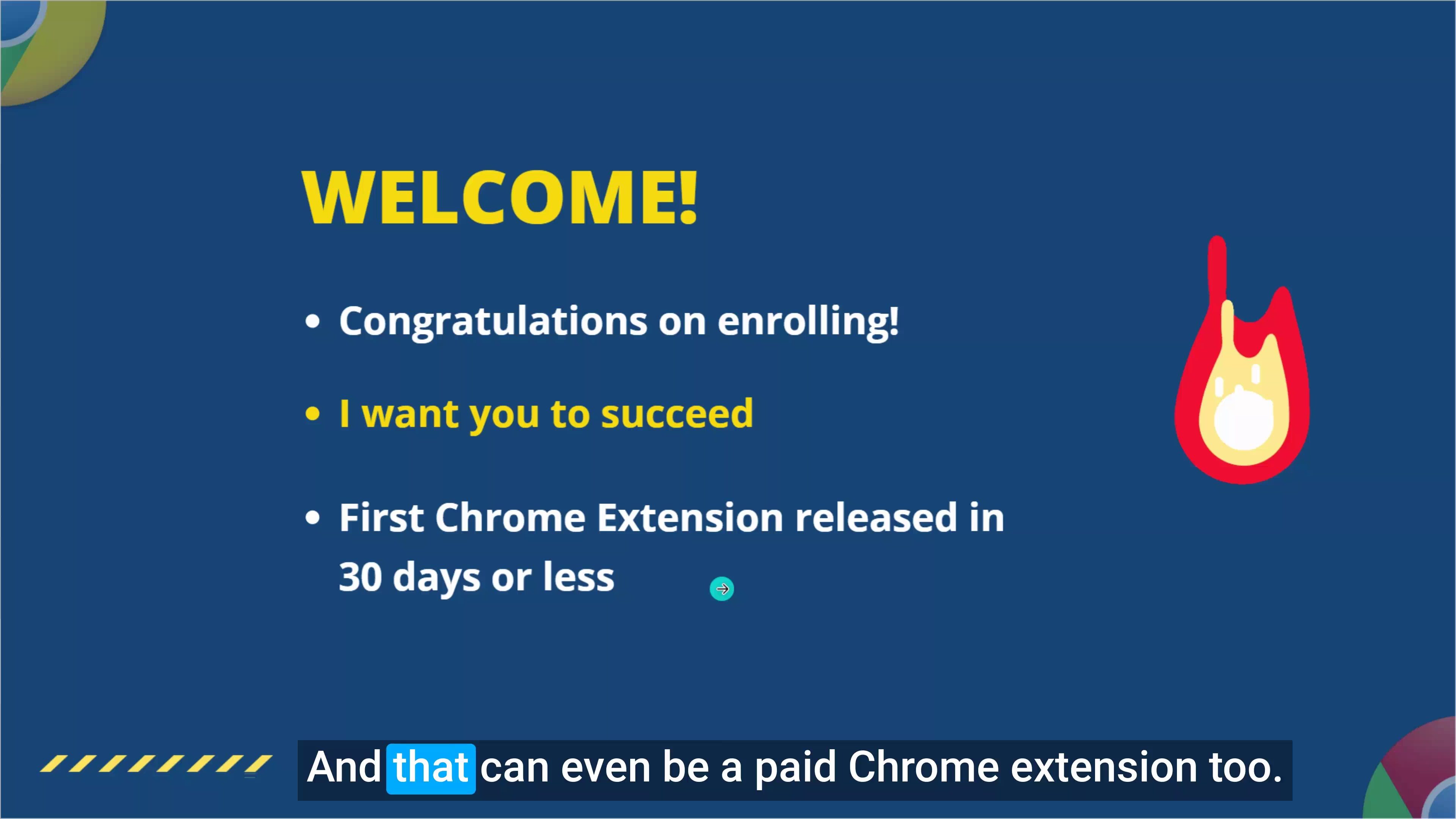
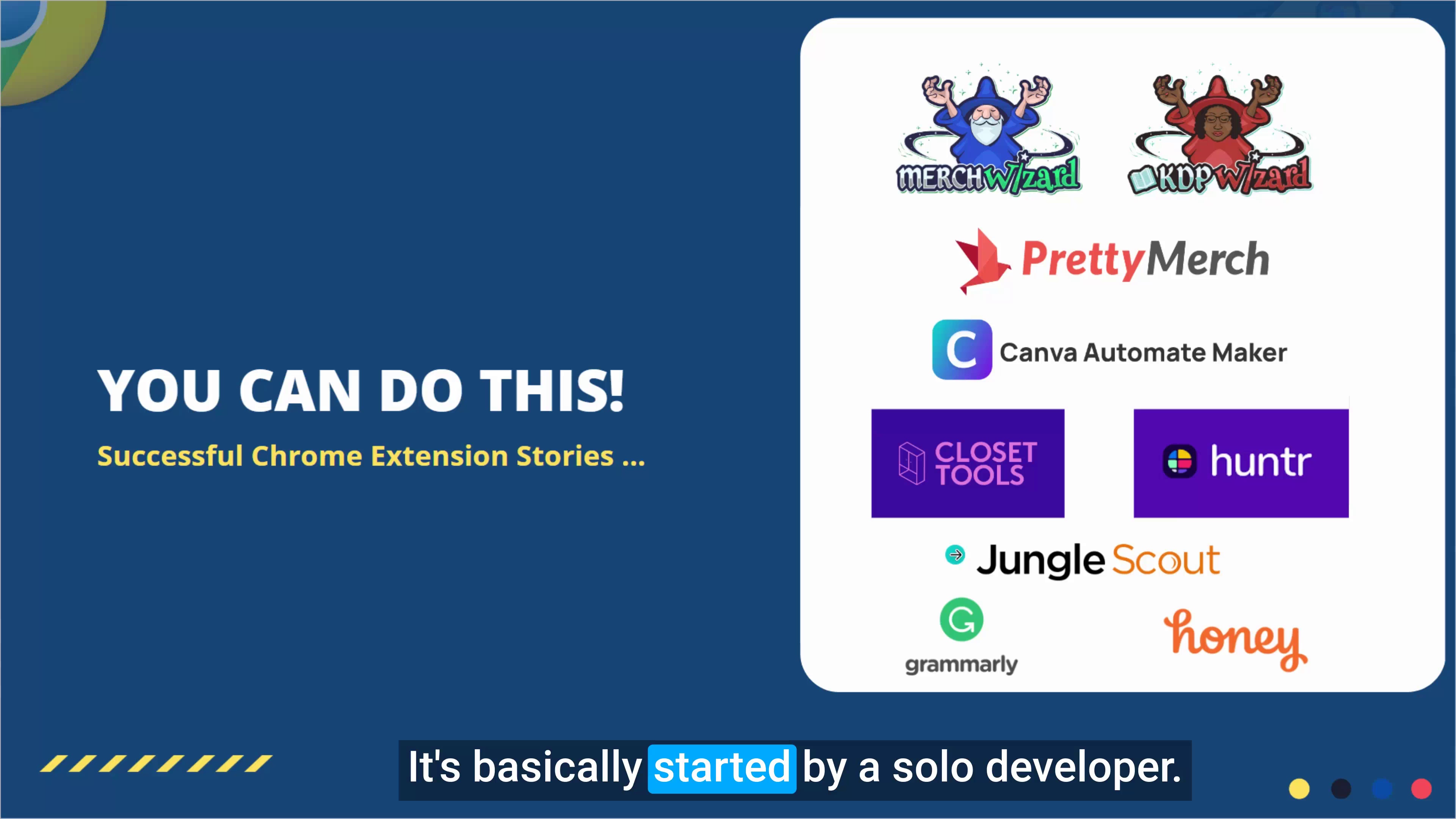
The narrator welcomes students to a course on creating profitable Chrome extensions. He encourages students to aim for releasing their first extension within 30 days.
Several successful Chrome extensions are highlighted as examples:
- Merch Wizard and KDP Wizard: Created by the narrator while working full-time, later scaled and sold for multi-six figures.
- PrettyMerch: A successful extension run by a solo developer.
- Canva Automation and Poshmark Automation: Extensions in different niches.
- Jungle Scout: Started by one person, now employs over 200 people globally.
- Grammarly: A well-known writing assistant extension.
- Honey: A coupon code extension sold for $4 billion.
The narrator emphasizes that students don't need to aim for billion-dollar exits. The course provides step-by-step guidance for building a profitable Chrome extension. The next lesson will cover a high-level program overview.
.https://fldmp.com/9Rick%20Blyth%20-%20Chrome-Ext/00-Welcome!/0.1-Welcome.mp4 - Part 2



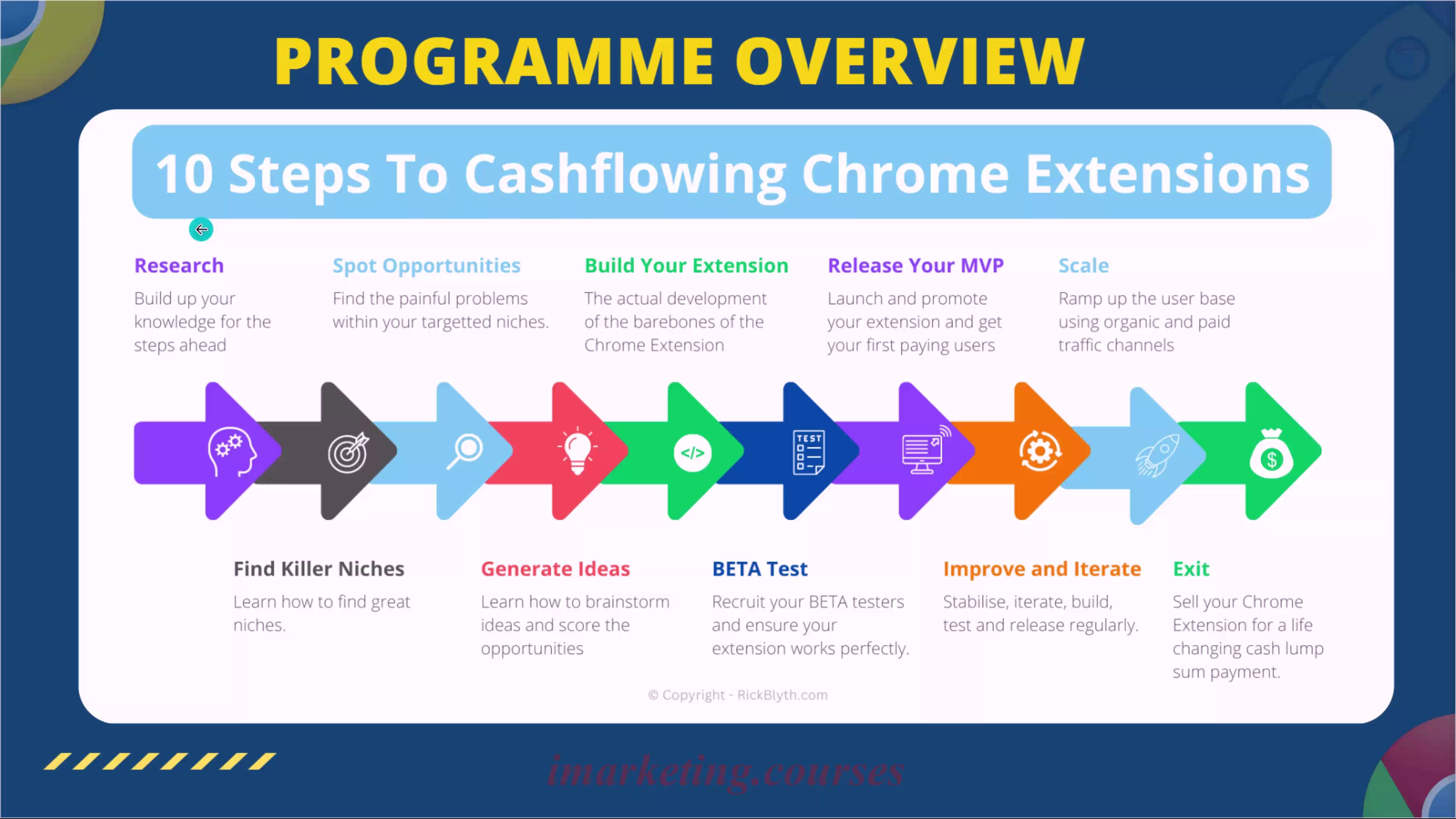
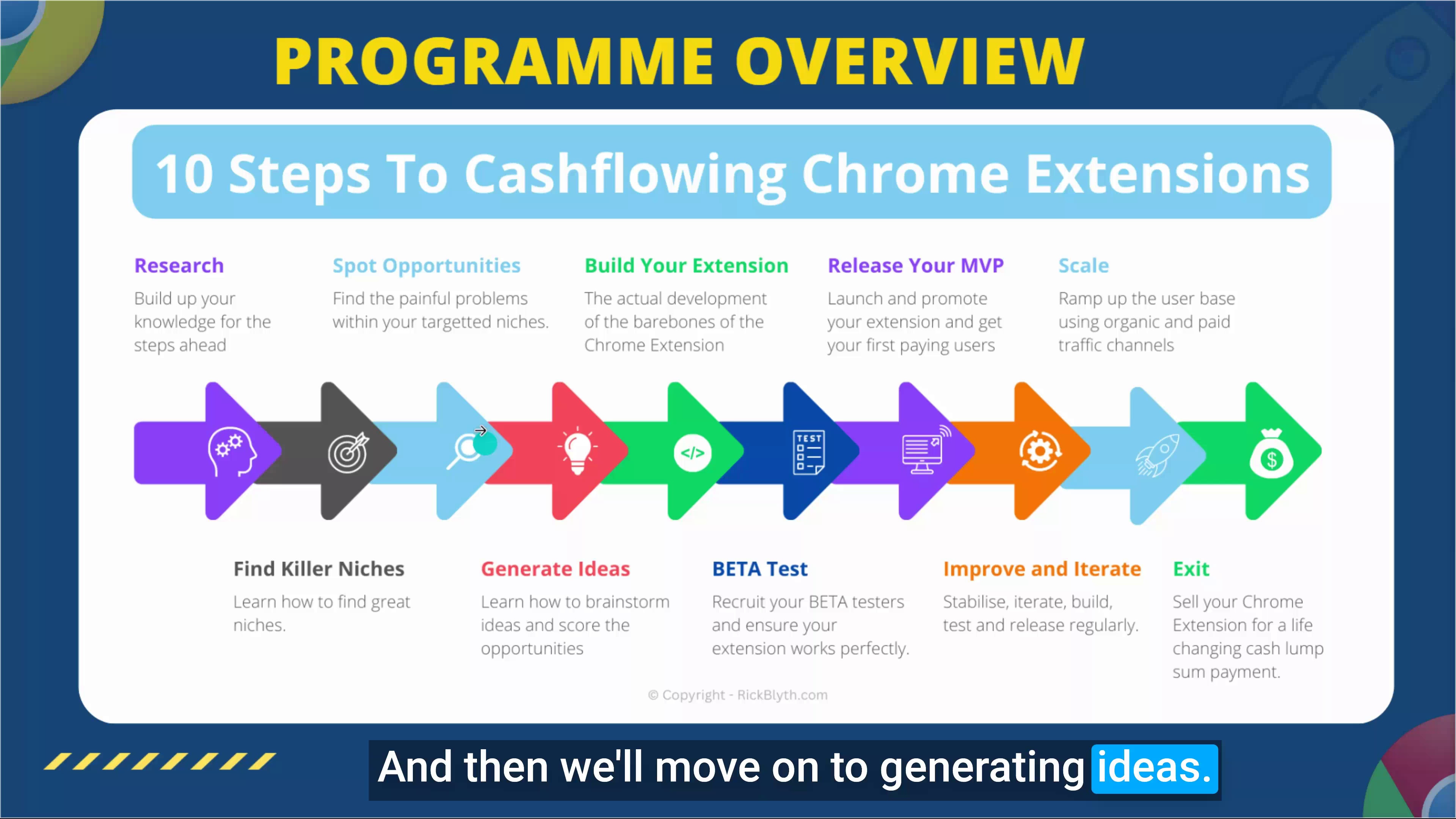
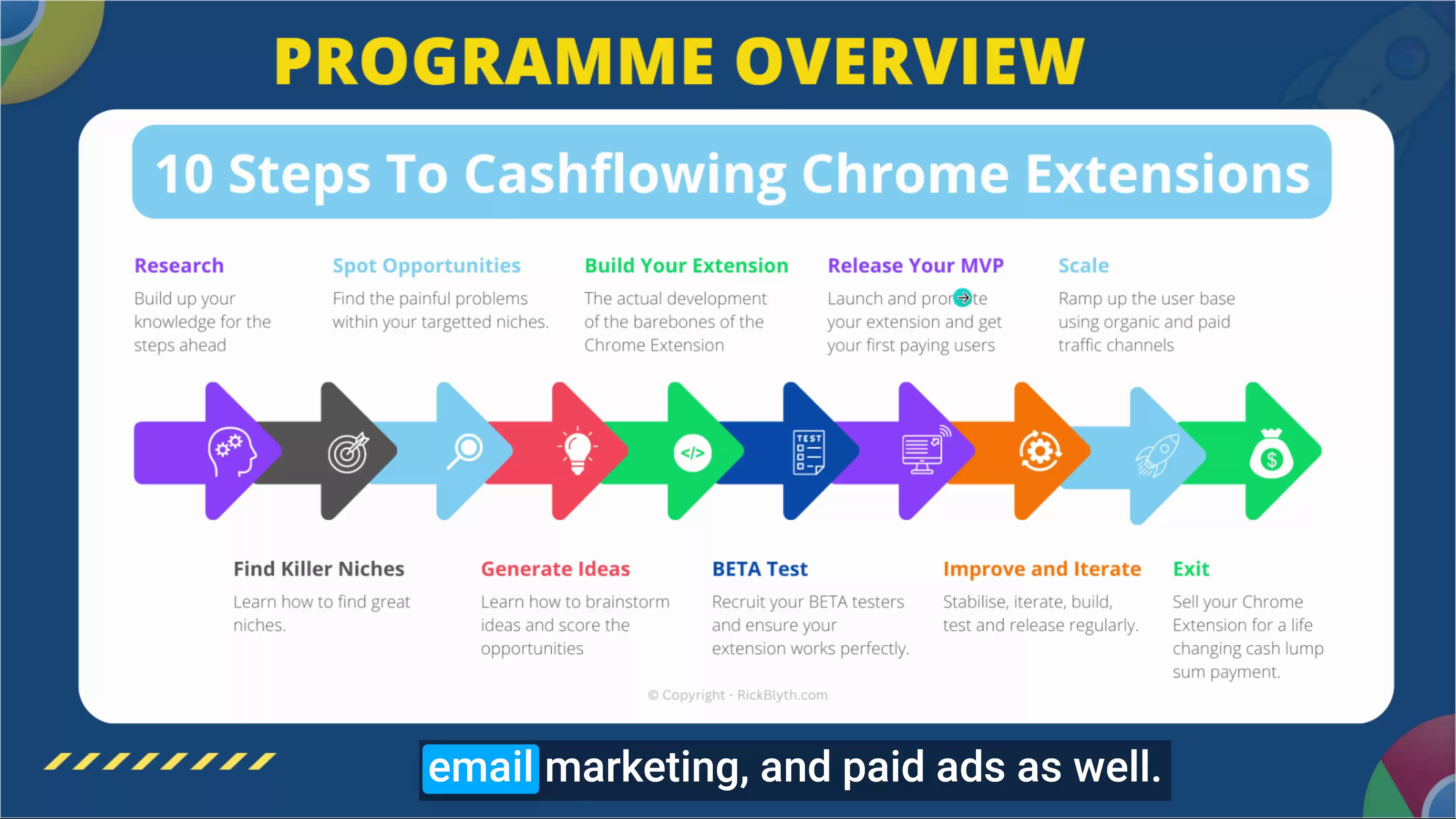
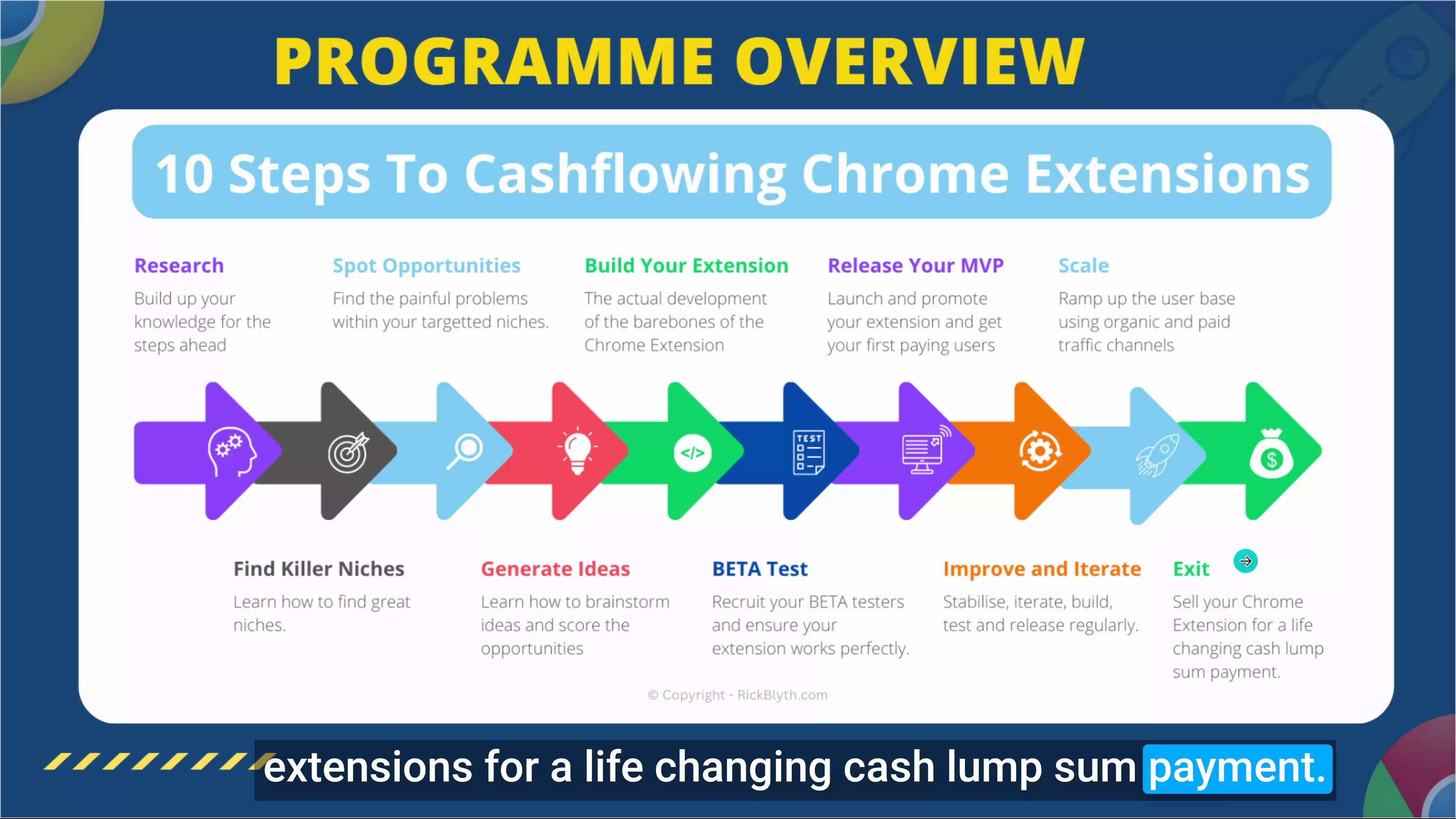
The narrator outlines 10 steps for creating profitable Chrome extensions. The steps are:
1. Research: Learn about Chrome extension features and functionality. 2. Find niches: Identify good niches and explore niche networks. 3. Identify problems: Find painful problems to solve with extensions. 4. Generate ideas: Use seven strategies to unearth opportunities. 5. Build MVP: Create a bare-bones version of the extension. 6. Recruit beta testers: Get insights and fine-tune the product. 7. Release MVP: Launch and promote using organic and paid methods. 8. Add features and stabilize: Iterate, build, test, and release regularly. 9. Scale user base: Use organic promotion, paid advertising, and partnerships. 10. Exit strategy: Enjoy passive income or sell the extension business.
The narrator emphasizes the importance of foundational work in steps 1-4. He advises against jumping straight to building an extension without proper research and idea validation. As a bonus, the process can be repeated for larger Chrome extensions with higher income potential and larger exit targets.
The narrator mentions a forthcoming lesson on a 30-day plan to reach the initial MVP stage. He stresses the potential for life-changing income and the option to sell extensions for a significant cash sum.
.